
Multi-year initiative recognizing the importance of the Declaration of Independence in the history of the U.S. and the world.
- Subject:
- Social Science
- Material Type:
- Lesson
- Provider:
- Gilder-Lehrman Institute
- Date Added:
- 07/22/2024

Multi-year initiative recognizing the importance of the Declaration of Independence in the history of the U.S. and the world.

Since 2005, the "Past and Present" podcast from Colonial Williamsburg has taken you behind the scenes to meet interpreters, chefs, tradesmen, musicians, historians, curators, and more. We offer two versions of our podcast: one that's audio-only and one that includes a slideshow. In this episode: Hear the Declaration of Independence read in its entirety by renowned Thomas Jefferson interpreter Bill Barker.

The Declaration of Independence states the principles on which our government, and our identity as Americans, are based. This source provides a transcript of the document, pictures of the original, and links to additional sources to help understand The Declaration as a whole.

Super Bowl 48 reading of the Declaration of Independence.
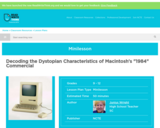
This lesson uses the "1984" Macintosh Commercial to introduce students to dystopian characteristics. Students analyze techniques used in the commercial and identify the comments that it makes about contemporary society.

Teaching multicultural literature is happily a big part of the modern conversation about English classes. However, a question that is less often asked is, what is the root of the need for it? Many Americans shuffle about their lives oblivious to the structural racism that permeates much of our society and culture. Those who choose “not to see color” or race are proliferating opportunities for a dominant culture to continue and even expand, thereby limiting opportunities for others. Through utilization of two important concepts – Critical Race Theory and Colorblind Racial Ideology – we can improve humanities instruction by scrutinizing the much bigger, and often ignored, picture of modern racism. Combining this with instruction on the art of Afrofuturism – specifically the work of Octavia Bulter, Sun Ra, and Jean Michel Basquiat among others – we can also fill a similar gap in the modern American imagination.

In this lesson, students will learn about the actions of John Marshall concerning the Cherokee nation. They will explore how his actions helped to advance justice and, through his example, learn how they can advance justice in their own lives.

In this video, learn about the distinction between deficits and debts, as well as the pros and cons of deficits.

In a series of three brief clips, Larry Kramer, Dean of Stanford Law School, provides some insights into understanding and teaching various details of the constitution.
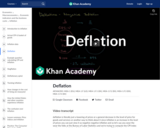
Explore the basics of deflation, including the definition of deflation, how the CPI changes when there is deflation, and why economists tend to be concerned when deflation occurs. Created by Sal Khan.

One of the biggest worries associated with deflation is a deflationary spiral, in which low unemployment and a decreasing price level leads to lower unemployment and an even lower price level. Created by Sal Khan.
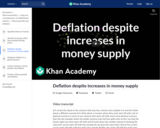
How you can have deflation even if the money supply increases. Created by Sal Khan.

In all, 70 delegates were appointed to the Constitutional Convention, but out of that 70 only 55 attended, and only 39 actually signed. Some simply refused, others got sick, still others left early.
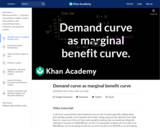
To get a better intuition about how much a consumer values a good in a market, we think of demand as a marginal benefit curve. In this video we look at the demand curve from a marginal benefit framework. Created by Sal Khan.
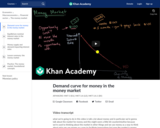
Why do people hold wealth in the form of money, rather than in some other interest-earning asset? Learn about the demand for money in this video.

A real-world example of the concepts behind the AD-AS model is the inflation that the United States experienced in the late 1960s. In this video, we break down some of the events going on at the time and use the AD-AS model to see if our predictions using this model match what really happened. Created by Sal Khan.

The U.S. Constitution Pathway delves into the Constitution's past and its lasting principles, highlighting their relevance to modern-day issues and events. Through the lens of history and social science, students engage in a critical exploration of how the values of freedom, justice, and equality play out in today's complex world. The pathway culminates in the Civic Action Project, which allows students to apply their learning and impact a public issue that matters to them. Access to these resources require a free educator login.
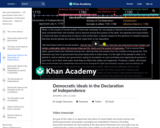
A close reading of the beginnings of the Declaration of Independence to identify ideas of natural rights, social contract, limited government and popular sovereignty in the text.
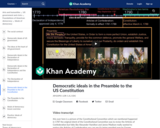
Learn how the Preamble to the US Constitution reflects the democratic ideals of the Framers.
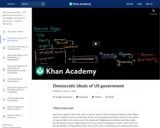
Ideas of natural rights, social contract, popular sovereignty, limited government and republicanism and their influence on the foundation of the United States of America.